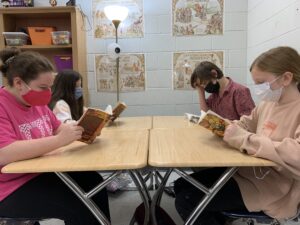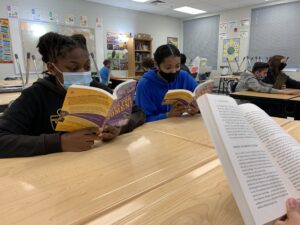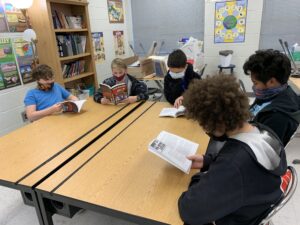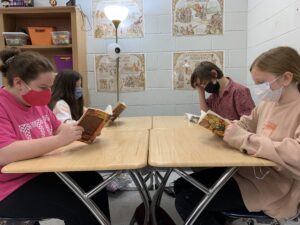By: Kimberly Dunbar, Social Studies Teacher at Cane Bay Middle School
There was an 8.2 intensity earthquake rippling through upper elementary and middle schools classrooms in the summer 2019. After years of wrangling, new social studies standards were adopted by our State Department of Education, and there were substantial changes in content for grades 3 – 7. As usually happens, it was now up to the teachers of South Carolina to make everything work. For sixth grade teachers like me, the changes were exactly what we knew were coming but had long been dreading – we were supposed to teach all of human history in 180 days. It was difficult enough to complete when we stopped after the Age of Exploration. The task now felt unattainable.

Part of what has made teaching this content so difficult is that very few students have any background knowledge about the earliest civilizations. If they do, that knowledge is usually limited (Egypt’s pyramids and mummies) or inaccurate (Greece according to Percy Jackson or 300). It’s hard for my students to make connections to material when there is no foundational information to attach to. My dilemma was how to present enough content so learners can connect the dots without overwhelming them.
Introducing Historical Fiction in the Social Studies Classroom

Wendy Garrett, a friend and mentor, introduced me to the idea of using historical fiction to build my students’ background knowledge. She had students participate in a class reading of a book she selected in addition to their daily warm-up questions. The thought was to kindle an enjoyment of reading AND sneak a little historical context in at the same time. Many of our students were academically below grade level and reluctant to attempt a typical novel study. We chose to scrap the usual process and keep things focused on the reading – no vocabulary, no character studies, no plot diagrams. If students ask about the meaning of a word, we’ll discuss it, try to decipher it. If students wanted to discuss things or had questions about the plot or theme, we would talk. Our intent was to present some details about ancient civilizations and historical events while we remind students how enjoyable reading could be. We let student interest guide our actions and activities. Everything was low stakes.

As I included daily readings into my lessons, what I found was encouraging. The first 2-3 weeks were long as I had to demonstrate and promote expected behavior during the read aloud time. When students accepted and started living into these new expectations, all of us could focus more on the information in the book. We were able to take a few minutes to practice using context clues to determine the meaning of new words. Afterwards, it became a game – who could find an appropriate time and place to use these new words. If an actual person was mentioned in our book, a student would give us a 60 second biography of the character. When an historical event was involved in the story, someone gave us a quick recap of what happened. The payoff came when students saw these same people and events in our regular class discussions and were able to recall information we had covered before. I could take another minute and help students put together the cause-and-effect of concepts we were learning. Lots of wins on multiple fronts!!!
Useful Tips when Integrating Historical Fiction into the Classroom:
- Explicitly teach your expectations for this reading time. If you are part of a teaching team and your ELA partner has procedures for this activity, try to mirror it. Consistency will make implementation easier. Have an anchor chart to use as a visual reminder of what you want to see and hear during this time.
- Save your voice and use an audio reader system when possible.
- Befriend your media center person. They are often the keeper of class sets. They know what’s available, what’s on order, what’s popular. They may have connections with other media centers and can arrange a loan of a class set from another school.
- Give your students some input about what your class reads. I get single copies of books and let my students “test drive” them. All I want to know is, “Did you enjoy it? Would you recommend it to a friend?” If a student can give you more details, write it down. These details are an invaluable resource in determining what will grab your students’ attention and can guide future choices.
- Get comfortable with looking for additional sources of funding. Until schools are better funded, it is hard to get class sets of the “latest and greatest titles” that are more likely to hold students’ attention. I have purchased several class sets through Donors Choose. I have several grant portals bookmarked. I’m always looking for ways to keep my classroom library fresh.

The skills that building background knowledge allows your students to practice, are the ones that will make them more engaged citizens and more valuable employees. Recognizing links between people, events and ideas are a building block of critical thinking. Critical thinkers identify situations, gather information, analyze information, and present solutions. These are the people that will make a difference in the future, if we take the time to teach them to solve problems. Teaching these new and different skills won’t be easy, but giving our students those skills will be worth every ounce of that effort.
About the Author

Kim is a second-career teacher with 13 years of experience. She’s currently working to bring ancient history to life at Cane Bay Middle School in Summerville, SC.
